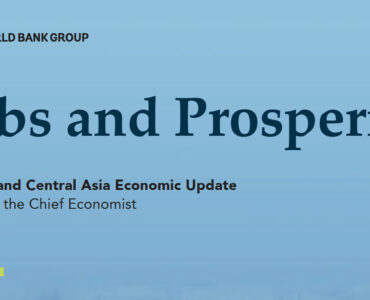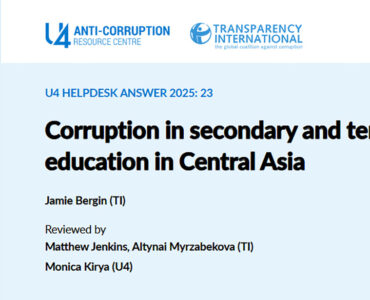Central Asia stands at a demographic turning point. While its relatively young population presents opportunities for economic growth, the region faces rising pressures from shifting labour dynamics, gender disparities, and vulnerable youth. An analysis by the International Labour Organization of labour, demographic, and social trends in Europe and Central Asia offers key insights into Central Asia’s specific strengths and looming challenges.
Key Demographic Trends and Opportunities
Central Asia is expected to maintain a low dependency ratio until 2050, with just 17 persons aged 65+ per 100 working-age adults, thanks to fertility rates remaining at or above replacement level. The share of those aged 55 years and above in the labour force in Central Asia is expected to reach over 15% in 2050, doubling from 7% in 2000. This contrasts with ageing European subregions and offers the region a potential demographic dividend – if policies harness its growing working-age population effectively.
The region also boasts the highest share of youth in Europe and Central Asia. The population of Central and Western Asia is projected to grow by 39 million by 2050. Migrant workers are increasingly significant, with their share in the labour force rising from 7.8% in 2013 to 9.5% in 2022. In Kyrgyzstan, Uzbekistan, and Tajikistan, remittances account for over 30% of GDP, supporting poverty reduction and economic stability. However, to fully harness their development potential, policies must channel remittances toward inclusive growth and address regional disparities. Reintegration support is also key to enabling returning migrants to contribute skills, innovation, and economic value at home.
Challenges Undermining Labour Force Potential
Despite favourable demographics, Central Asia’s labour force participation rate (LFPR) is projected to drop by almost 6 percentage points by 2050, more than triple the decline forecasted for Europe. While women’s LFPR fell less than men’s between 1991 and 2024 (1.7 vs 6.5 percentage points), the gender gap remained high at 26 percentage points in 2024.
Among older workers (55-64), women are more likely than men to hold part-time or informal jobs and work in agriculture or low-skilled occupations. Women earn significantly less – only 61.9% of men’s income in 2024. Barriers to decent employment for women include unpaid care responsibilities, occupational segregation, discrimination, and workplace harassment. For instance, in 2023 in Europe and Central Asia, 21% of inactive women justified their status with care responsibilities.
The labour market remains stratified, with youth (15-24 years) in precarious positions. Around 16% of youth in Central Asia are not in employment, education or training (NEET). The share of women is much higher at 21.3% compared men 11.5%. Many young people face skills mismatches, part-time or informal work, and discrimination. Youth unemployment in Europe and Central Asia was 13.5% in 2024, with young women disproportionately affected.
Donate to support Turkmen analysts, researchers and writers to produce factual, constructive and progressive content in their efforts to educate the public of Turkmenistan.
SUPPORT OUR WORKAdditionally, 12% of Central Asians aged 65+ remain in the workforce, often due to inadequate pensions, signalling strain on social protection systems.
Demographic and labour trends are expected to have a positive net impact of +1.0 percentage point on GDP growth annually in Central Asia from 2024-2050, driven by a growing working-age population. However, declining employment rates could shave 0.6 percentage points off annual GDP growth, unless productivity improves significantly.
Central Asia’s productivity growth has slowed from 4.1% (1991-2007) to 2.5% (2007-2024), indicating an urgent need for investment in skills, digital transformation, and inclusive labour policies.
Inclusive Development: Policy Imperatives
To capitalize on its demographic potential and ensure resilience, Central Asia must:
- Close the gender gap in employment and earnings;
- Expand opportunities for youth, especially in education, digital skills, and decent jobs;
- Address barriers for persons with disabilities, who face a regional unemployment rate of 25.4%, far above the 4.7% average for the working-age population in Europe and Central Asia;
- Leverage migration, balancing economic benefits with skill recognition and labour protections;
- Boost productivity while ensuring inclusive access to gains;
- Invest in care infrastructure, as caregiving responsibilities keep many women, especially older women, out of the workforce.
Central Asia’s demographic trajectory offers a unique opportunity, but only if decisive, inclusive, and future-focused policies are implemented. With rising risks of declining participation, gendered inequities, and youth marginalization, harnessing the region’s human capital will be central to sustaining growth and building resilient, equitable economies.






